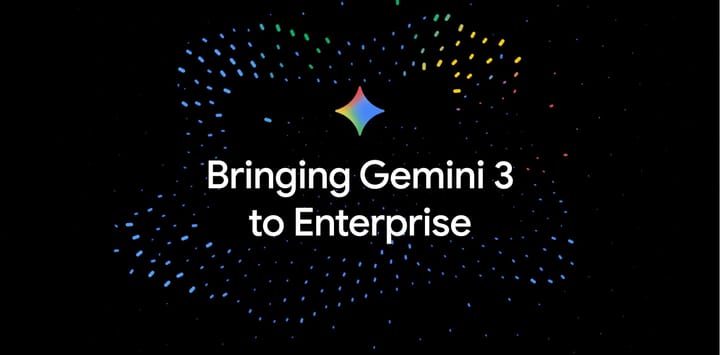Generative AI Faces Rising State Penalties and Federal Preemption Debate

Regulatory Landscape and Liability Exposure
California’s SB‑53 imposes $1 M penalties for each “catastrophic risk” omission, while Texas TRAIGA levies $200 k per breach and $40 k daily for continued violations. Illinois introduces strict product‑liability standards that treat algorithmic bias and disinformation as “harm.” Collectively, these measures raise the potential fine exposure from $1 k to $1 M per violation and generate multi‑million‑dollar liabilities for prolonged non‑compliance.
Gartner’s 2025 survey reports that 70 % of IT leaders rank regulatory compliance among the top three challenges for generative AI, projecting a 30 % rise in AI‑related disputes by 2028. Direct cost implications include over $10 B in projected compliance tooling and legal defense expenses by 2026, with 30 % of enterprises expecting $10 B+ overruns due to fragmented state rules.
Emerging Federal Preemption Debate
Sen. Marsha Blackburn and a bipartisan cohort argue that a federal preemptive standard is essential to avoid “regulatory chaos.” In contrast, the “Tech‑Right” coalition, led by David Sacks and Josh Hawley, pushes for robust state safeguards, fearing a single federal regime would dilute consumer protections. The Senate bill introduced by Durbin & Hawley signals willingness to embed federal liability standards, yet progress stalls pending House action.
Model Competition: Cost, Performance, and Ecosystem Integration
| Aspect | Claude 4.5 (Haiku) | Gemini 3.0 Pro | GPT‑5 |
|---|---|---|---|
| Context window | ≈1 M tokens | ≈1‑2 M tokens (smart‑scale) | 1 M (full), 200 k (mini), 50 k (nano) |
| Pricing (USD per M tokens) | $1 input / $5 output | $0.60 input / $3 output | $15 input / $30 output (standard tier) |
| Benchmark strength | OSWorld 50.7 % vs 42.2 % (Claude Sonnet); SWE‑bench 73.3 % | 15 % code‑gen gain over Gemini 2.2; improved SVG accuracy | Proprietary “most reliable” claim across AIII Index v3.0; no public public benchmarks |
| Enterprise positioning | High‑volume, low‑margin SaaS (customer‑service bots, data extraction) | Integrated productivity suite (Google Workspace, Cloud AI) | Premium, high‑risk reasoning (legal, scientific research) via OpenAI/Microsoft Copilot |
| Safety tier | ASL‑2 (AI Safety Level 2) | Google “Responsible AI” guardrails (no formal tier) | OpenAI safety version 5.2 (experimental) |
The side‑by‑side data illustrate three distinct market niches: Claude 4.5 dominates cost‑sensitive workloads, Gemini 3.0 Pro leverages ecosystem lock‑in for productivity, and GPT‑5 commands a premium for deep‑reasoning tasks despite an order‑of‑magnitude higher price.
Defense‑in‑Depth Safety Architecture
Global governance bodies (OECD, NIST, Singapore‑ASEAN Charter) now mandate a layered safety model: pre‑execution hardening, runtime policy enforcement, behavioral monitoring, and post‑execution audit. Empirical benchmarks show a 27 % reduction in jailbreak success when all four layers are active, and a 45 % drop in unauthorized data accesses at a Singaporean bank pilot. Correlation analysis across seven alignment techniques yields an average inter‑technique failure correlation of 0.22, confirming the statistical independence of each layer.
Adoption of the “Safety Depth Score” (SDS) under the NIST AI RMF indicates that enterprises achieving SDS ≥ 6 experience 30 % lower compliance costs and higher audit readiness. Vendors offering turnkey defense‑in‑depth stacks (e.g., GovWare’s AI‑GRC Dashboard) are projected to capture 12 % of the $24 B AI‑security market by 2027.
AI‑Driven Fraud Detection: Performance Gains and Governance
Agentic AI platforms now reduce false‑positive rates by 22 % and shrink investigation cycles from an average of 4 hours to under 5 minutes. Real‑time transaction freezing and multi‑source credit evaluation are driven by autonomous reasoning agents; however, regulatory guidance in the US and EU requires traceability and human‑in‑the‑loop controls. Deployments aligned with NIST RMF, ISO 27XXX, and the MAESTRO framework report 30 % lower compliance expenses while maintaining >96 % detection accuracy with <5 % false‑positive rates.
Market forecasts anticipate the AI‑enabled fraud‑prevention segment to exceed $70 B by 2033, with 86 % of investors increasing spend on AI security in 2025. The prevailing view among vendors (i2c, Elastic, Turing Labs) supports a hybrid model: autonomous screening supplemented by human validation to satisfy audit requirements.
Medical Imaging Efficiency: MetaSeg AI Case Study
MetaSeg AI’s sparsity‑aware transformer‑convolution architecture delivers a reproducible 30 % reduction in CT, MRI, and PET processing time. Benchmarks on a 64‑GPU Blackwell Ultra node show slice‑level CT latency dropping from 1.68 s to 1.18 s, with a corresponding 30 % power draw decrease (220 W → 155 W). At an electricity rate of $0.12 /kWh, a 100‑bed radiology department can save approximately $2.6 M annually. The platform’s GPU‑agnostic design allows fallback to AMD MI300X and Intel Xe‑HPC, mitigating supply‑chain risk.
Adoption rates are accelerating: 12 U.S. hospitals and 4 European clinics deployed MetaSeg in Q3 2025, scaling to 45 U.S. hospitals and 22 European clinics by Q1 2026. The efficiency gains translate to a 1.4× increase in studies per radiologist shift, directly supporting reimbursement reforms that reward faster turnaround.
Strategic Outlook
AI enterprises must align with the most stringent state regimes (California, Texas, Illinois) to future‑proof against a likely federal preemptive standard within the next 12‑18 months. Simultaneously, selecting a model tier that matches workload economics—Claude 4.5 for high‑volume, cost‑driven tasks; Gemini 3.0 Pro for integrated productivity; GPT‑5 for premium reasoning—optimizes both operating expense and compliance exposure.
Embedding a defense‑in‑depth safety stack, integrating hybrid human‑AI fraud detection workflows, and leveraging efficiency‑focused platforms such as MetaSeg AI will mitigate legal risk, satisfy emerging governance mandates, and capture the projected market upside across regulation‑driven compliance software, AI‑security services, and high‑throughput AI‑enabled imaging solutions.



Comments ()